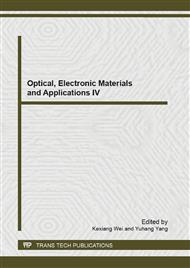p.424
p.428
p.433
p.437
p.441
p.447
p.454
p.459
p.463
Architecture Earthquake Disaster Simulation Based on Three-Dimension GIS Algorithm
Abstract:
GIS geographic information system algorithm are able to be used in the disaster initialization period, middle and rescue stage for the advanced two-dimensional simulation technology with its geographical model as well as providing us with accurate and quick geographical indicators, with the estimation of building distribution and mountain damaged condition, can bring us extremely high value in use. But the traditional GIS algorithm also has tremendous convenience, namely we can't form accurate analysis of the buildings and streets form three dimensional regions, we cannot tell the difference between topographic change quantities as well, resulting in certain circumstances that the algorithm is no practical. This article puts forward 3d and 2d embedded GIS algorithm according to the satellite remote sensing technology, which can be used to cope with buildings and streets for disaster situation simulation and analysis, through this algorithm we are able to obtain the original data before a disaster, disaster failure scene and the distribution of post-disaster construction. With verification, this algorithm has high practical value and can shorten the fitting time of data.
Info:
Periodical:
Pages:
441-446
Citation:
Online since:
July 2013
Authors:
Price:
Сopyright:
© 2013 Trans Tech Publications Ltd. All Rights Reserved
Share:
Citation:


